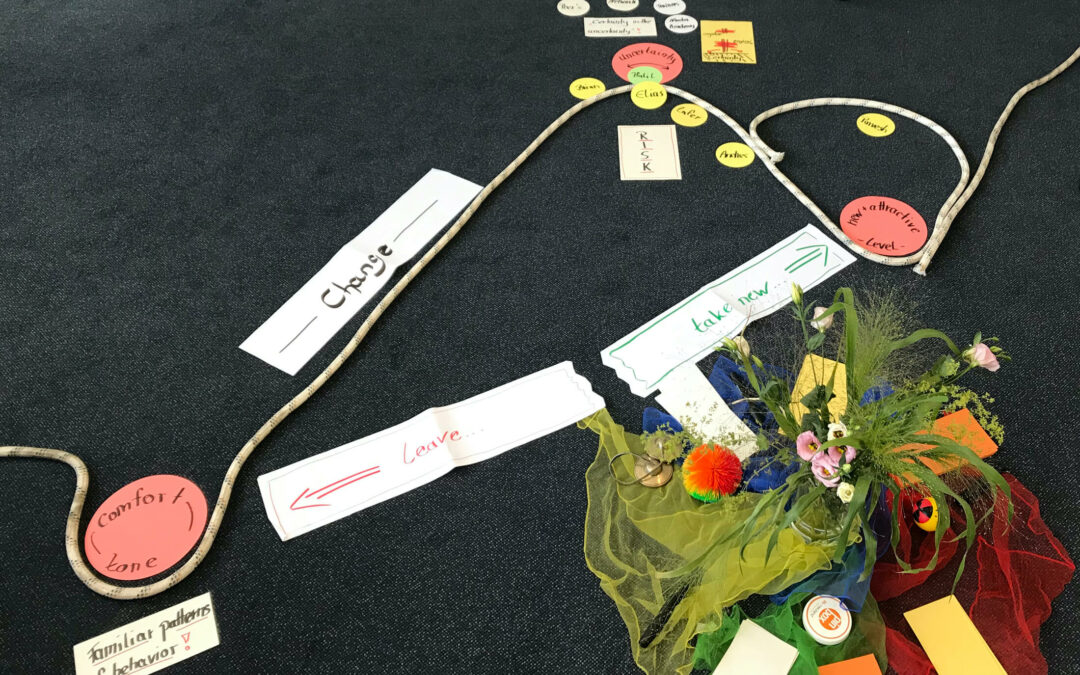Things will never be the same again
“Once my trainers have completed their trainer qualification, there’s no going back.”
I hope I haven’t frightened you off! But before you leave my blog, allow me to explain myself. This statement might have surprised you. You might even find it a bit unsettling. Although, it’s actually a good description of what I do.
So, what exactly do I mean?
When organizations decide to work with me on the qualification of their team of trainers, we think critically about all established methods and behaviors. We choose to take some of these behaviors with us on our journey, but the majority of them we leave behind.
There are five steps on the way to completing my trainer qualification:
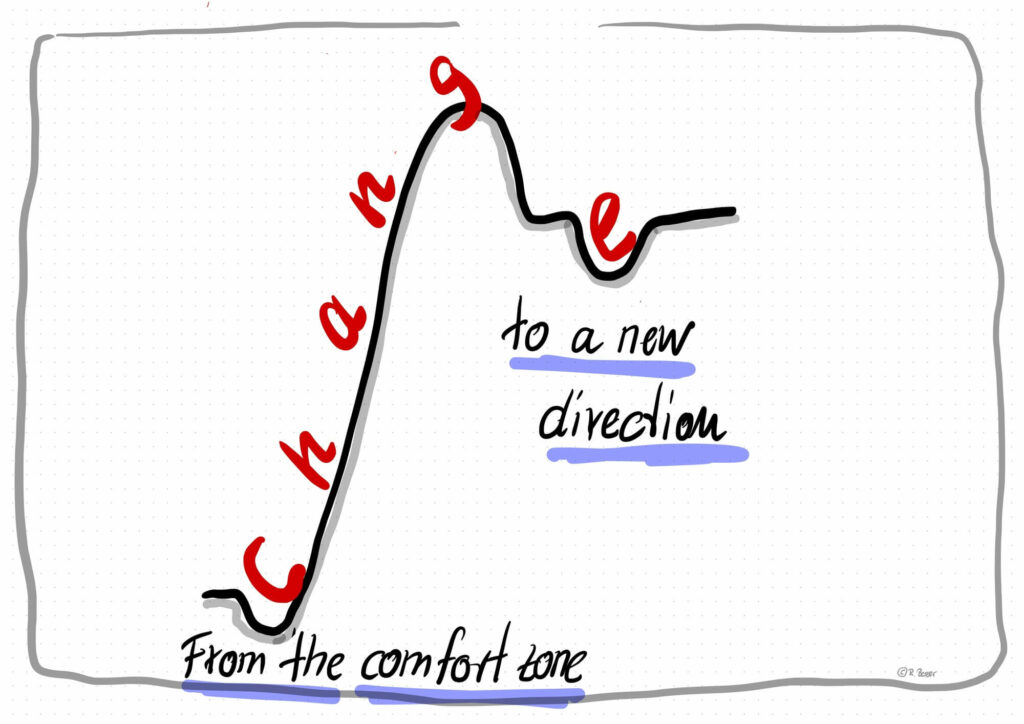
Step 1: Stepping out of your comfort zone!
We start where everyone feels safe and secure: in their comfort zones. Most of the trainers already know how to design and deliver training courses. They use a set of training methods that they have successfully used in the past and feel comfortable using.
However, we’re not here to go through the same old routines. Quite the opposite: it’s time to leave our comfort zones and venture into new territory.
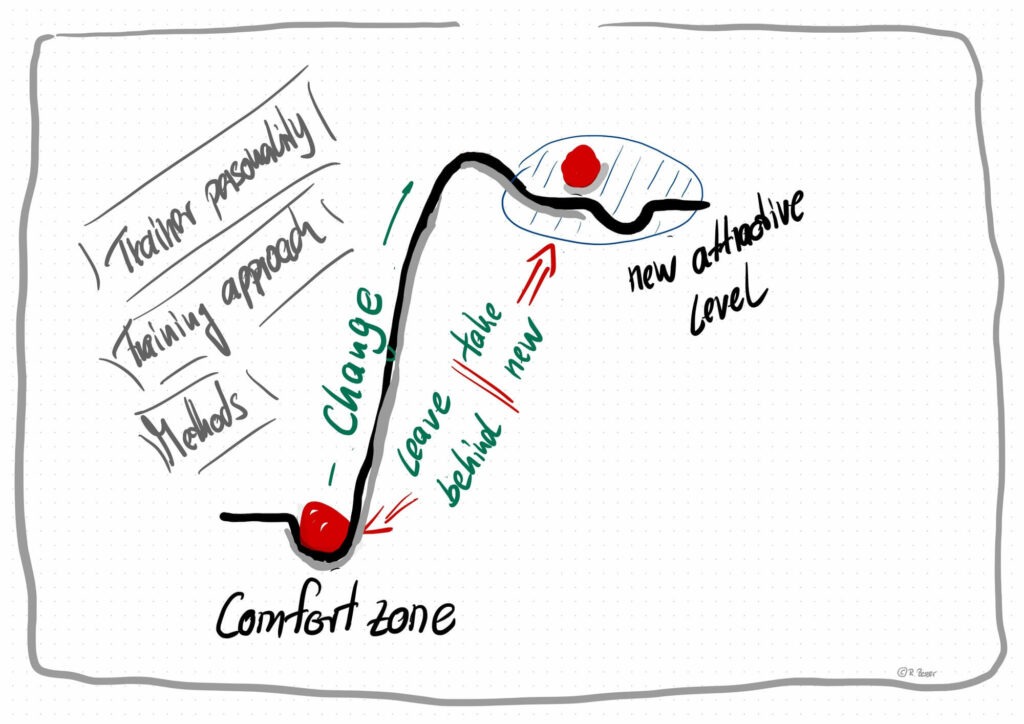
Step 2: Embracing change!
The first part of our journey involves discarding everything that is no longer useful. Each trainer goes through a comprehensive personal change process, asking themselves which methods and behaviors they want to keep and which can be left behind in their old comfort zone.
At this stage of my trainer qualification the trainers discover a whole range of new and creative ways of designing training courses. Some will feel unfamiliar, some perhaps even slightly bizarre. Instead of using PowerPoint, they deliver their training content using flip charts, pin boards, floor presentation and other creative approaches.
Two interesting things happen to the trainers at this stage.
First
Their attitudes to their trainings change and they start focusing more on the individual participants and their learning success.
Second
The trainers gradually start to develop a totally new understanding of their role and approach. They are more aware of the impact they make on the participants and see themselves as a learning facilitator rather than an imparter of knowledge.
This is the point at which I always experience something very special: the gradual development of new trainer personalities and trainers who have learnt how to leverage their strengths.
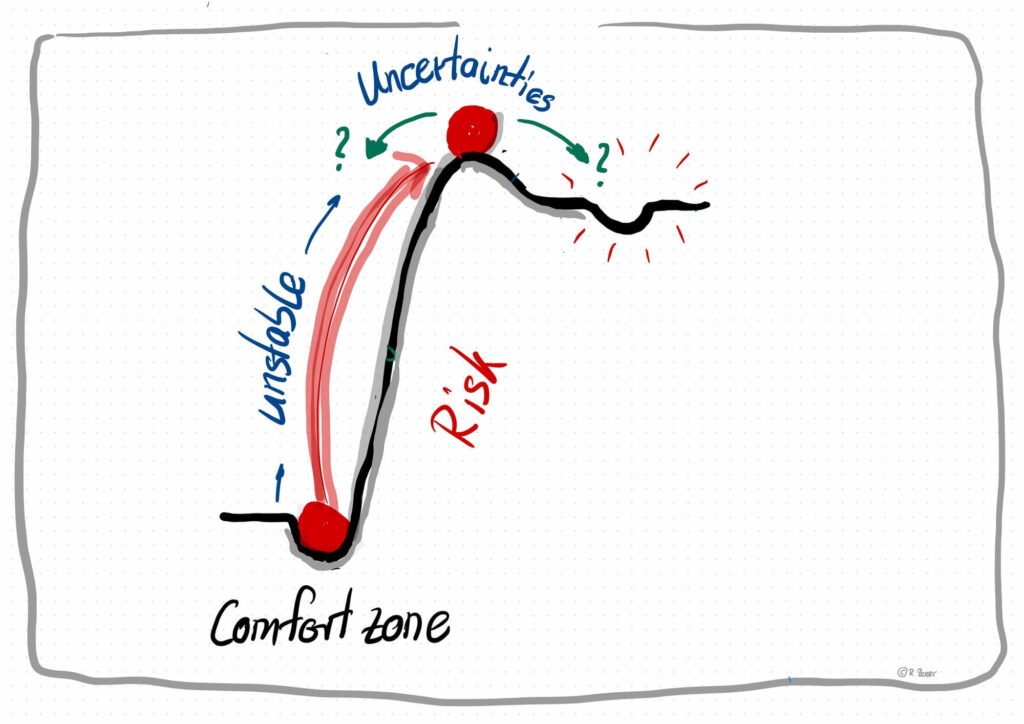
Step 3: Keeping an eye on your goals!
This eventful journey now sees us at the highest point of the transition phase. Here we rest for a moment, take a look back at the path we have taken and feel proud of what we have achieved. So much has already changed!
Nevertheless, as they look at the long road ahead, some of the trainers may well be feeling a bit nervous. The next stage in this journey is the most difficult one. The trainers are going to have to apply these changes to their everyday work situations in the long term. That may tempt them to return to their old ways. This is the point at which they all need to persevere, remain disciplined and keep on track with their goals.
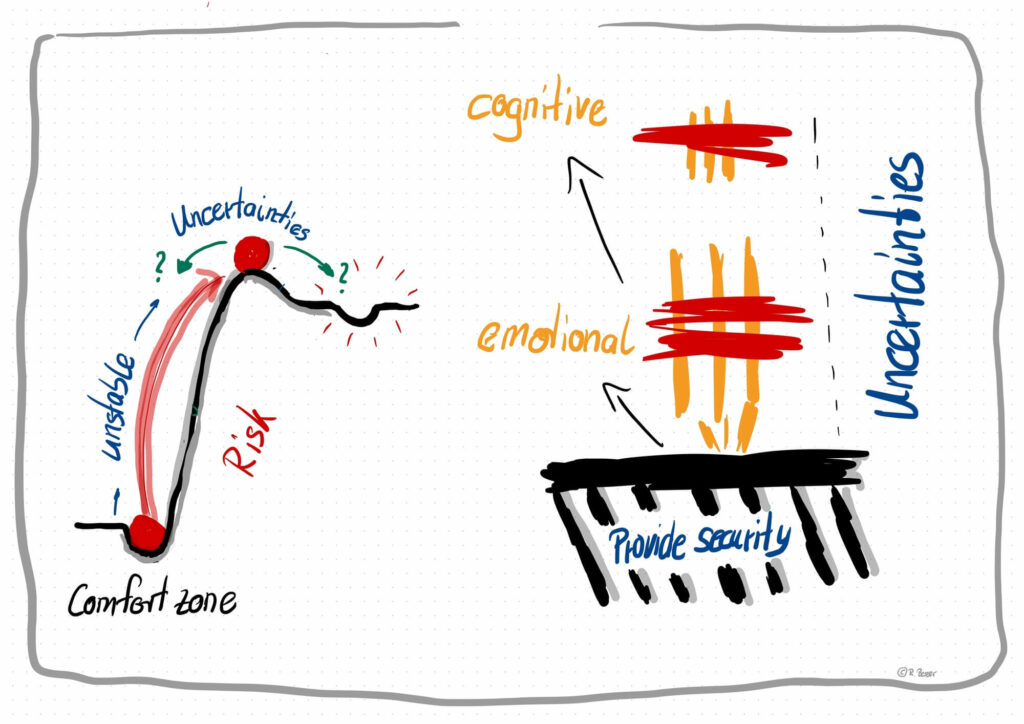
Step 4: Staying focused for the final sprint!
The trainers now have all the skills they need to design and deliver excellent training courses. When they get back to their workplaces it is far more difficult to put what they have learnt into practice. After all, they are now on their own and no longer in a secure learning environment with other trainers.
Yet that’s what it’s all about. The whole point is to integrate these new teaching behaviors into their training routines. Each training they deliver during this period gives them more experience and raises their confidence. This is where we have an extremely important role to play. And by we, I mean all the people who oversee training in your organization and myself. We are there to build your trainers’ confidence exactly when they need it most, helping to ensure that their personal development is sustained.
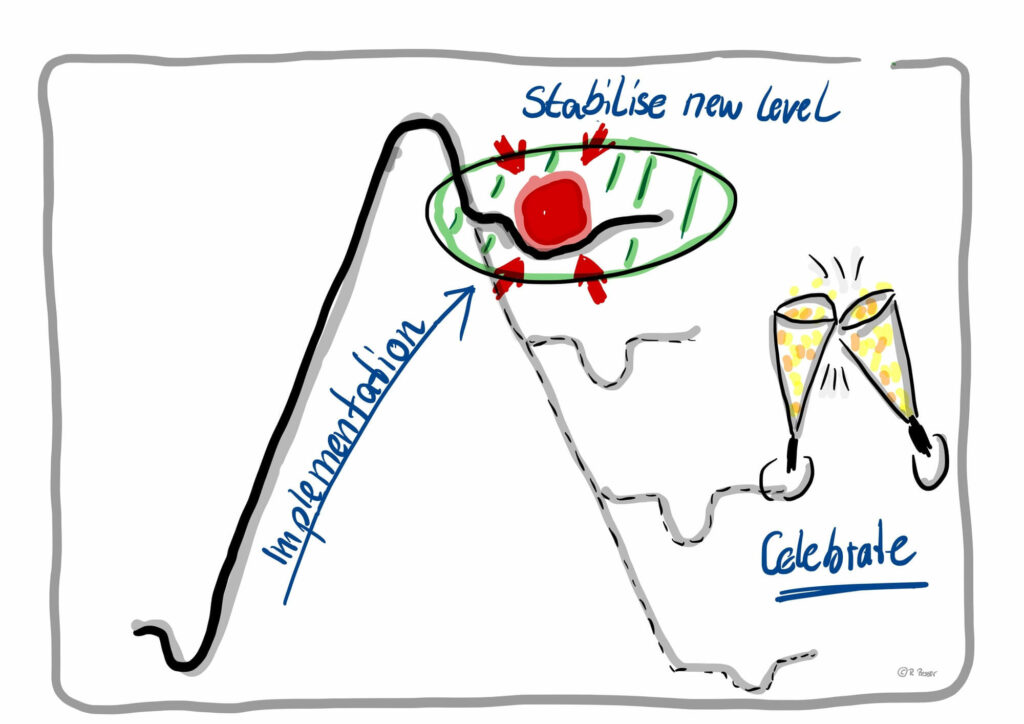
Step 5: Taking a look back and celebrating success!
My work is only over when this has been fully achieved and there’s no going back. Only then do I feel that we have truly reached our goals. In other words, it’s time to celebrate our success and the achievements and perseverance of each individual trainer.

